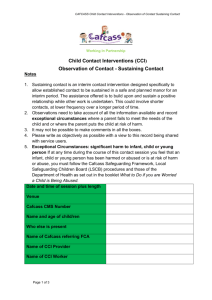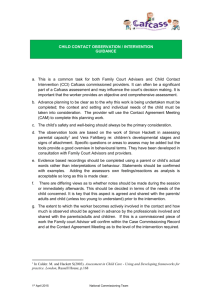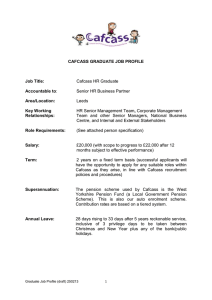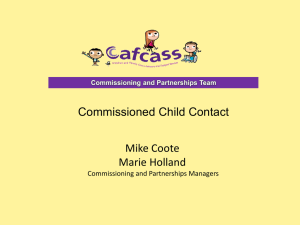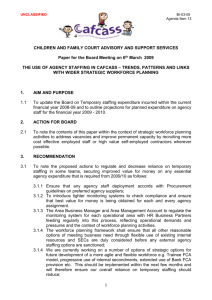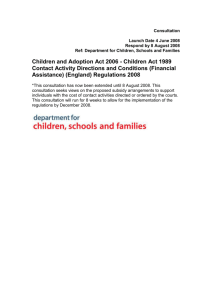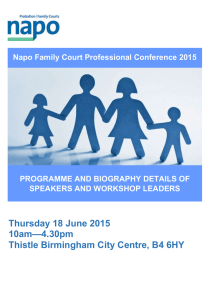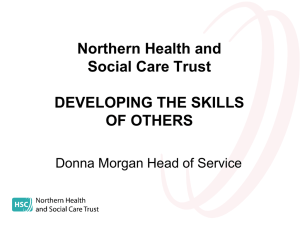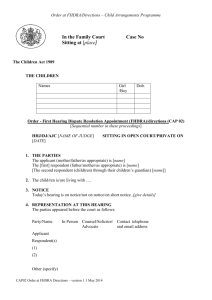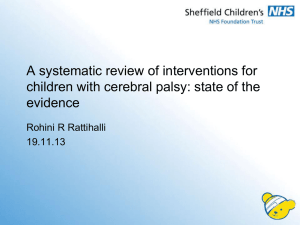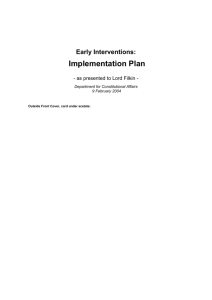Observation of Contact Version for One to Five Years
advertisement
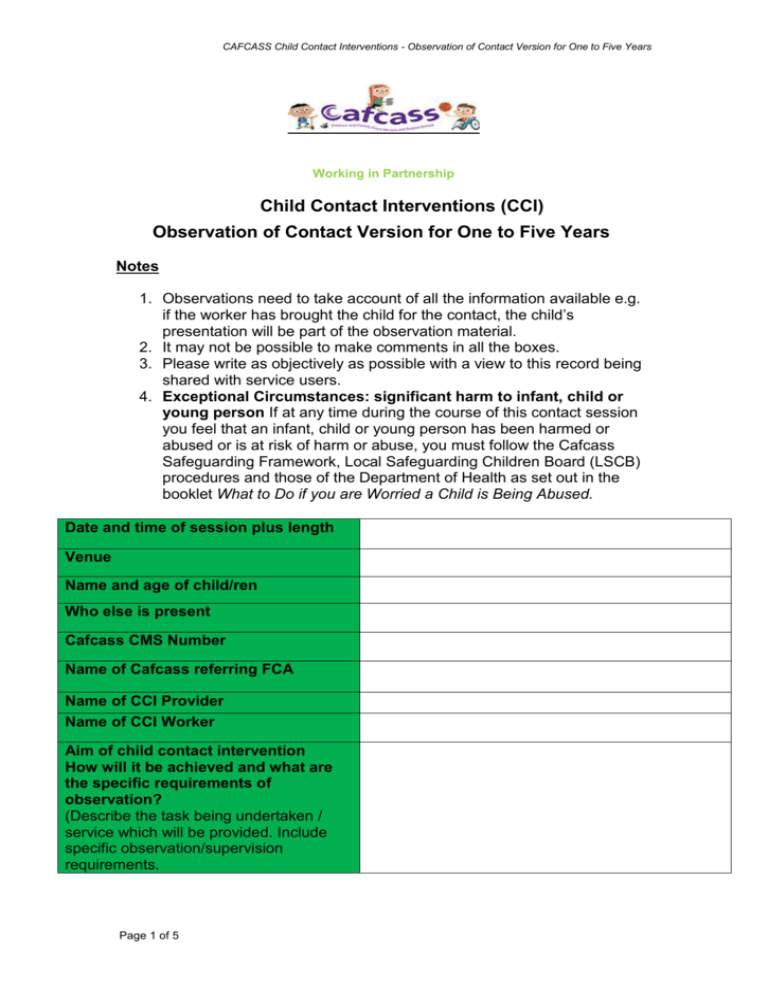
CAFCASS Child Contact Interventions - Observation of Contact Version for One to Five Years Working in Partnership Child Contact Interventions (CCI) Observation of Contact Version for One to Five Years Notes 1. Observations need to take account of all the information available e.g. if the worker has brought the child for the contact, the child’s presentation will be part of the observation material. 2. It may not be possible to make comments in all the boxes. 3. Please write as objectively as possible with a view to this record being shared with service users. 4. Exceptional Circumstances: significant harm to infant, child or young person If at any time during the course of this contact session you feel that an infant, child or young person has been harmed or abused or is at risk of harm or abuse, you must follow the Cafcass Safeguarding Framework, Local Safeguarding Children Board (LSCB) procedures and those of the Department of Health as set out in the booklet What to Do if you are Worried a Child is Being Abused. Date and time of session plus length Venue Name and age of child/ren Who else is present Cafcass CMS Number Name of Cafcass referring FCA Name of CCI Provider Name of CCI Worker Aim of child contact intervention How will it be achieved and what are the specific requirements of observation? (Describe the task being undertaken / service which will be provided. Include specific observation/supervision requirements. Page 1 of 5 CAFCASS Child Contact Interventions - Observation of Contact Version for One to Five Years Parent’s engagement with the child and his/her responses Parent behaviour 1. Initial contact - greetings How does the parent greet the child – enthusiasm without being over demanding etc? How does the parent structure the activity/time with the child – through toys, activities, initiating conversation etc? Does the parent know the child’s likes and dislikes? 2. How does the parent show acceptance or approval of the child – praise, physical affection, joining in with activities? Does the parent initiate affectionate overtures and react sensitively to the child’s responses? 3. How does the parent show understanding of the child’s developmental level? What they can remember Suggesting age appropriate activities Neither expecting too much nor talking down to the child Child’s reactions to parent’s initial contact 4. To what extent does the child seem at ease around the parent e.g. smiling, playing and talking versus being silent, distant or tearful? Does the child explore his/her surroundings? Does the child respond positively to the parent? Does the child seem relaxed and happy? Does the child look at people when communicating? Does the child engage in age appropriate activities? Does the child use speech appropriately? Does the child demonstrate normal fears? Page 2 of 5 Observations CAFCASS Child Contact Interventions - Observation of Contact Version for One to Five Years Responsiveness of parent to child as session develops (emotional warmth, stimulation etc) 5. How does the parent respond to the child initiating interaction through conversation, facial expressions and actions? Does the parent seem to enjoy this child? Does the parent show disapproval /non-acceptance of the child – criticism, negative commands, moving away etc? If more than one child, does the parent spread attention fairly across all the children? Does the parent notice and attend to the child’s physical needs – hunger/thirst, bathroom, falling over etc? How does the parent react if the child is upset? Child’s reactions 6. How does the child react as the session progresses? Relaxes/Grows more tense Becomes more confident/withdrawn Mentions other family members/is reticent Shows interest in the parent – asks questions or seems disinterested Reacts positively to parent being physically close Boundary setting by parent 7. Does the parent set appropriate boundaries? Does the parent use disciplinary measures appropriate for the child’s age? How does the parent respond if the child does not agree with the parent or has their own opinion? Does the parent give clear messages about behaviours that are approved or disapproved of? Does the parent comment on positive behaviours as well as Page 3 of 5 . CAFCASS Child Contact Interventions - Observation of Contact Version for One to Five Years negative? Focus on child’s needs or adults’ own issues 8. Can the parent put the child’s needs first? How far does the parent focus on the child or appear distracted bored, withdrawn? Does the parent make any problematic statements – comments about the past, the other parent; or ask any inappropriate questions of the child such as whether they love the parent; information about the other parent; using inappropriate adult language etc? Endings/departures Parent How does the parent handle goodbyes? Manages own feelings and meets child’s needs Demanding of response from child Child How does the child react? Sadness, indifference, interest in further meetings etc Worker’s role Does the worker need to intervene/stop contact? Summary of observations – key points and overall assessment of: 1. The Child’s needs. 2. How these were met by the parent 3. Any other significant environmental factors (The 3 domains of the Assessment Framework) Page 4 of 5 CAFCASS Child Contact Interventions - Observation of Contact Version for One to Five Years 4. Exceptional Circumstances: significant harm to Infant, child or young person. Have you, at any time during the course of this contact, felt that an infant, child or young person has been harmed or abused or is at risk of harm or abuse. Has there been a disclosure of current or historical abuse? If yes please summarise below and state the actions taken. Actions/next steps Observation completed by: Print Name and Signature Page 5 of 5
